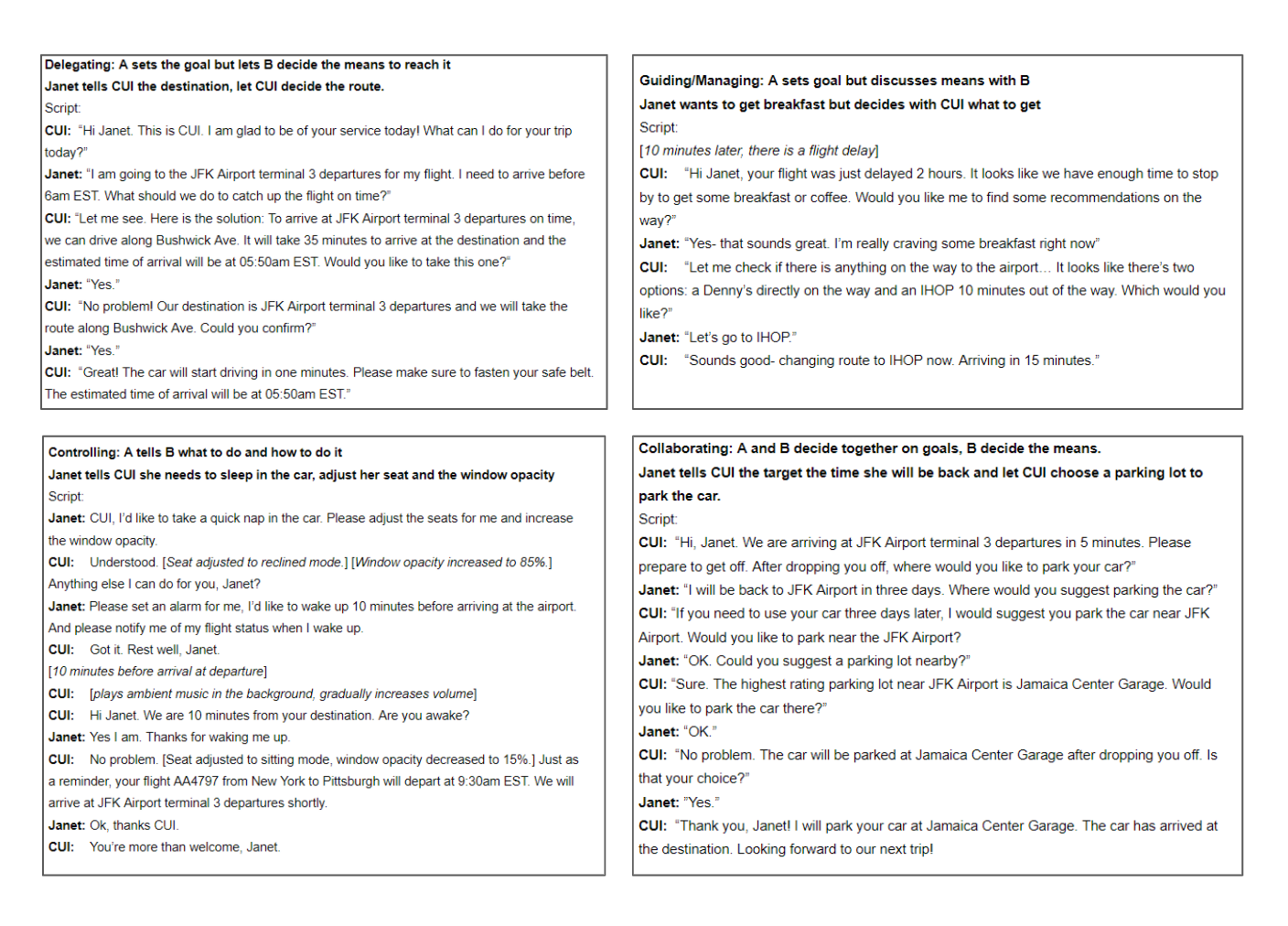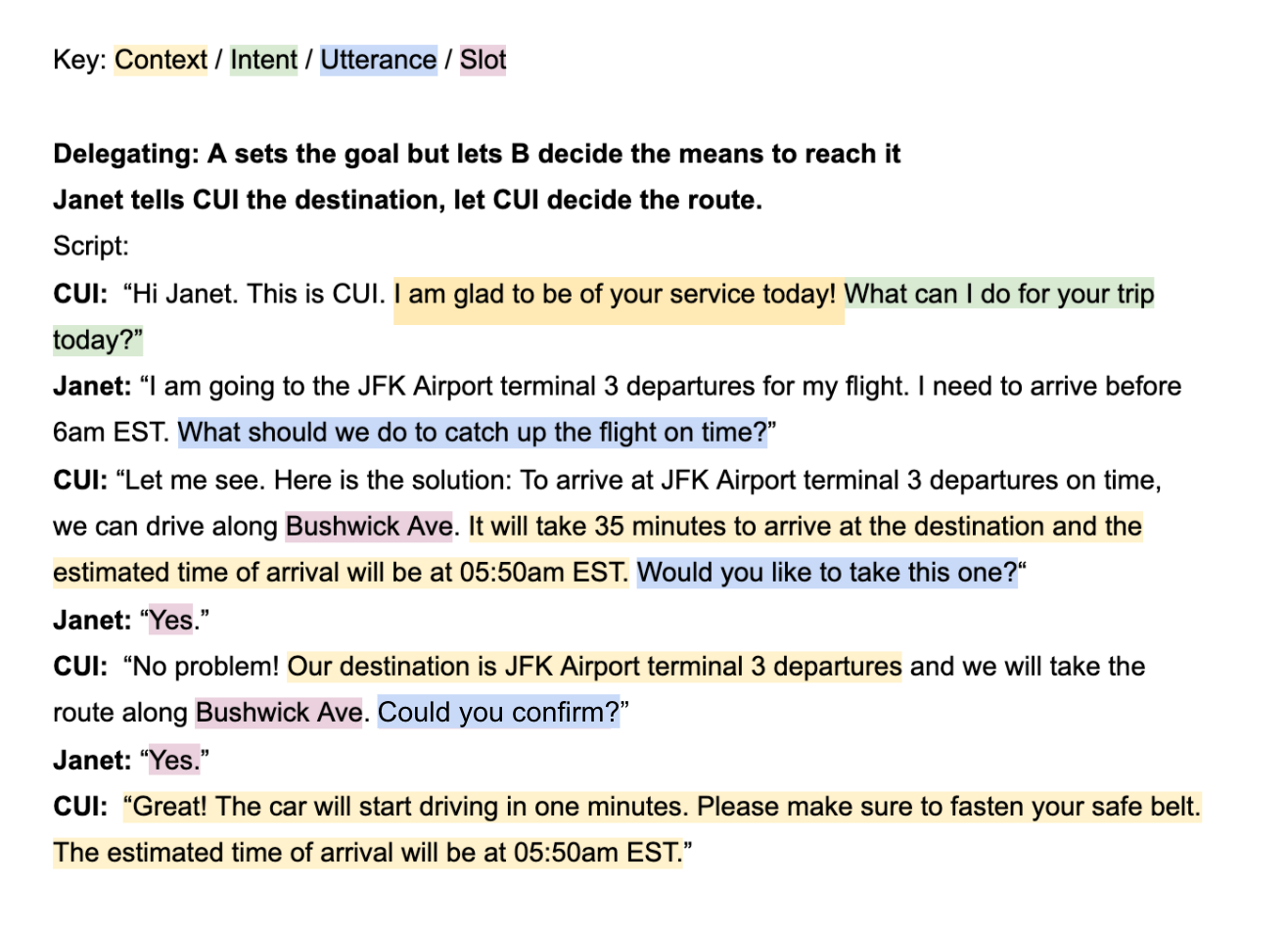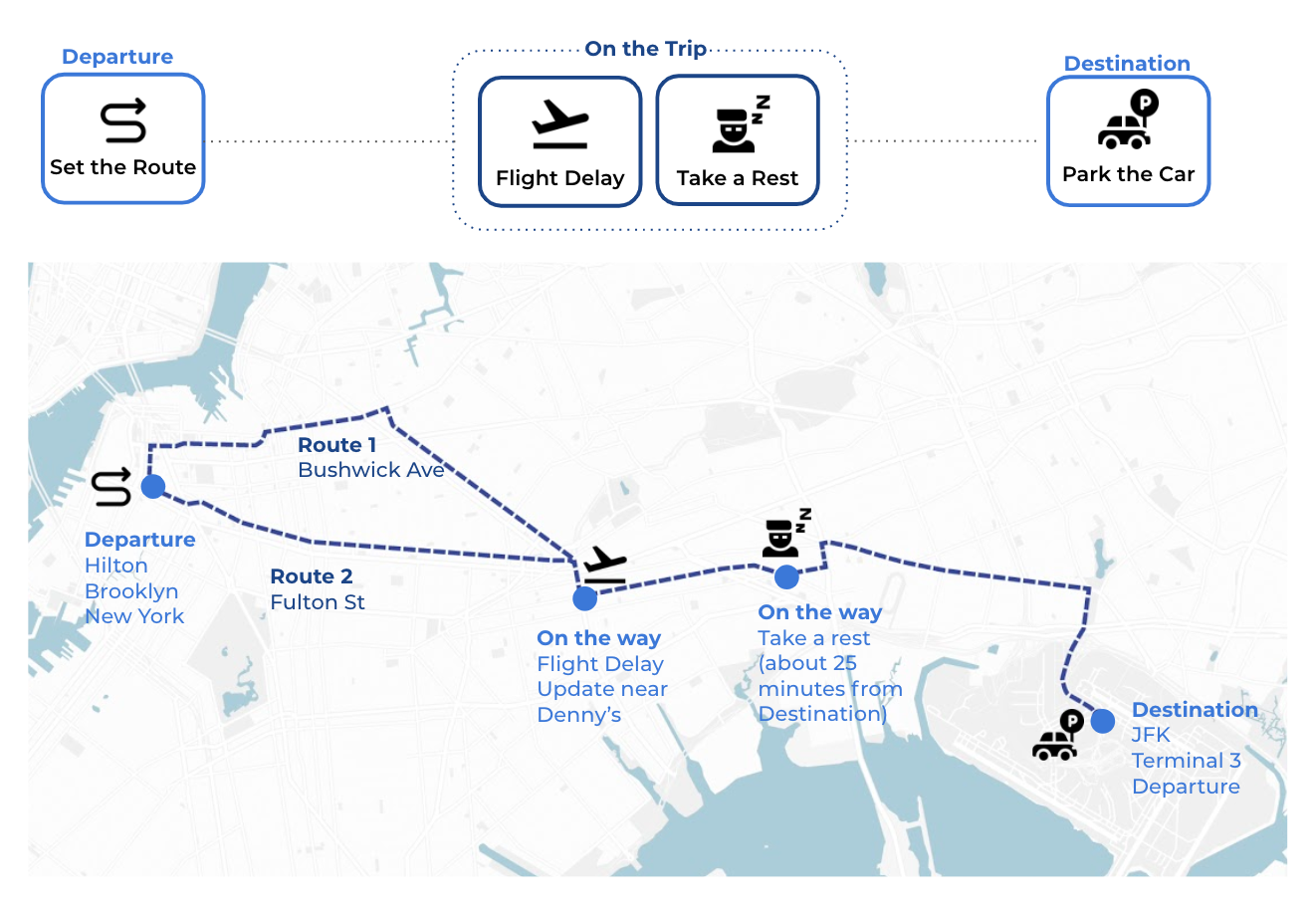"Conversational User Interfaces (CUIs) are ready-to-use interfaces were the spoken word is the design material we, as interaction designers, work with and design for."
This is a project designed with Xiaoran Zhang and Phi Nguyen for the class 05392 Interaction Design Overview at Carnegie Mellon University. Constructed with Voiceflow, our CUI Alice is curated to improve all aspects of commuting with a focus on efficiency and flexibility during the short-distance trip to the airport. Through the journey map making, scripting the conversation and reiteration on the prototype, we are able to relate our conversation to real-time, location based scenario, in order to help user manage their time during the trip.
PROCESS DESCRIPTION
Setting the Persona + Situation
Our user is a 32 year old businesswoman named Janet, who has her own company and frequently commute through flights between New York and Pittsburgh. The scenario begins with Janet checking out of Hilton Brooklyn at NYC and tries to catch her flight AA4797 in the morning. She will fly to Pittsburgh to meet a client for a few days, then return to NYC.
Journey Map
Due to our scenario, we focused on designing a CUI that would primarily find the most time-efficient route to the terminal. The second most important function is to park the car somewhere after the trip. In addition, our CUI is also designed to update users on their live flight status, adjust car setting to accommodate user needs (seats, music, etc), and make any plan changes during the trip.
Conversation Example: Flight Delay
This is a diagram of an ideal conversation between our CUI Alice and user Janet. Here, Alice gets live update that Janet’s flight has been delayed, and adjusts for this schedule change by suggesting to find a breakfast location for Janet (since it’s early morning). We assume: This car belongs to Janet, so Alice would know Janet’s habits. Alice also automatically pairs with Janet’s phone and the internet.
Conversation Model + Annotated Scripts
These four scripts represent the final moments chosen for our Voiceflow prototype. After writing 16 total scripts, we decided on these four because they felt the most natural for users based on each situation. Luckily, we were able to have one of each conversational type, although it was unintentional.
After choosing our four final scripts, we annotated them with the corresponding context, intent, utterance, and slots. We were able to easily convert the conversations into Voiceflow, since the prototype would be based on these annotations.


Moments + Alice's Capabilities in a Real World Context
Through the script iteration, we synthesised four moments and clarified the goals and means in each moments, related to the four major functional features in our final prototype - Navigation, Traffic/Flight Live Update, Parking Personal Assistance, Parking Arrangement.
Based on real-world physical context, we developed the final prototype by creating the map of Alice and Janet’s trip where the four moments happens. By developing the prototype with real-world interaction, Alice is able to supply real-time and location based information in the final prototype.


Prototype Structure + Conversation Flexibility
Through the process of developing the full voiceflow prototype, we structure the four conversation to show the time and choice flexibility that user can activate and end the conversation by their personal need and Alice can give different feedback based on user’s choices.
For each utterance, we set up multiple choices for Alice to recognize user's choice and give corresponding feedback. Also there are three reprompts set up in case Alice cannot receive choice-related utterances, which guarantees the fluency of the whole prototype.